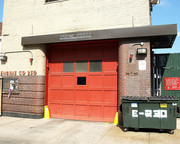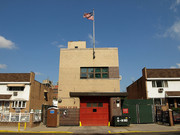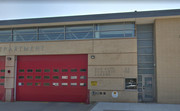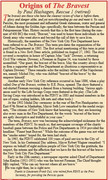You are using an out of date browser. It may not display this or other websites correctly.
You should upgrade or use an alternative browser.
You should upgrade or use an alternative browser.
FDNY and NYC Firehouses and Fire Companies - 2nd Section
- Thread starter mack
- Start date
- Joined
- Aug 29, 2008
- Messages
- 2,487
Even lower, E168/EMS Batt. 23
Well, maybe even with "230"
Well, maybe even with "230"
TOTALLY AMAZING.
You guys have details that I never expected.
Here's one, "how many bricks were used in the original two bay, three story firehouses" ?
Just a firehouse kitchen table question.
Just kidding of course, but I'm sure most of you have been around firehouse kitchen tables and you know how that can be.
GREAT JOB GUYS.
You guys have details that I never expected.
Here's one, "how many bricks were used in the original two bay, three story firehouses" ?
Just a firehouse kitchen table question.
Just kidding of course, but I'm sure most of you have been around firehouse kitchen tables and you know how that can be.
GREAT JOB GUYS.
Upon further review, the quarters of Engine 220 and the original quarters of Ladder 123 (now Engine 227) seem to have their unit identification higher than Ladder 17's.
The interesting thing, aside from the old FDNY designation when the quarters were built (120 for Engine 220 and 73 for Ladder 123), is the FDNY Maltese Cross with those numbers in the center has the symbols reversed. The hydrant is on the left and the hook and ladder is on the right, unlike the way the symbols appear now, for example, on an FDNY firefighter's badge.
The interesting thing, aside from the old FDNY designation when the quarters were built (120 for Engine 220 and 73 for Ladder 123), is the FDNY Maltese Cross with those numbers in the center has the symbols reversed. The hydrant is on the left and the hook and ladder is on the right, unlike the way the symbols appear now, for example, on an FDNY firefighter's badge.
t123ken said:Upon further review, the quarters of Engine 220 and the original quarters of Ladder 123 (now Engine 227) seem to have their unit identification higher than Ladder 17's.
The interesting thing, aside from the old FDNY designation when the quarters were built (120 for Engine 220 and 73 for Ladder 123), is the FDNY Maltese Cross with those numbers in the center has the symbols reversed. The hydrant is on the left and the hook and ladder is on the right, unlike the way the symbols appear now, for example, on an FDNY firefighter's badge.
"t123ken", how many would ever notice anything like which side of the Maltese Cross has the hydrant or the hook and ladder on it.
Or as you and others have pointed out, where the company numbers are placed on some firehouses.
As I see it, "pretty impressive to say the least".
I could have used a few of you guys to read the fine print when I got myself into a few deals that I wish I hadn't done.
All kidding aside, some very impressive attention to details.
t123ken said:Upon further review, the quarters of Engine 220 and the original quarters of Ladder 123 (now Engine 227) seem to have their unit identification higher than Ladder 17's.
The interesting thing, aside from the old FDNY designation when the quarters were built (120 for Engine 220 and 73 for Ladder 123), is the FDNY Maltese Cross with those numbers in the center has the symbols reversed. The hydrant is on the left and the hook and ladder is on the right, unlike the way the symbols appear now, for example, on an FDNY firefighter's badge.
Engine 220:


t123ken said:Upon further review, the quarters of Engine 220 and the original quarters of Ladder 123 (now Engine 227) seem to have their unit identification higher than Ladder 17's.
The interesting thing, aside from the old FDNY designation when the quarters were built (120 for Engine 220 and 73 for Ladder 123), is the FDNY Maltese Cross with those numbers in the center has the symbols reversed. The hydrant is on the left and the hook and ladder is on the right, unlike the way the symbols appear now, for example, on an FDNY firefighter's badge.
Engine 227:
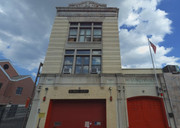

Engine 168/EMS Station 23 firehouse 1100 Rossville Avenue Rossville, Staten Island Division 8, Battalion 23 "Shanghai Express"
Engine 168 organized 1100 Rossville Avenue 2005
Battalion 23 located at 1100 Rossville Avenue 2013
Pre-FDNY: Rossville was protected by volunteer Rossville Hook & Ladder 1.
2355 Arthur Kill Road:
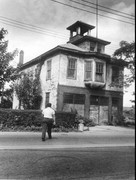
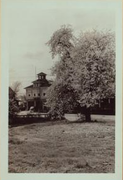
1100 Rossville Avenue:
http://www.nydailynews.com/archives/boroughs/rossville-spot-s-s-new-firehouse-article-1.868168
Monday, November 5, 2001 MAYOR GIULIANI JOINS FIRE COMMISSIONER VON ESSEN AND DDC COMMISSIONER HOLDEN TO BREAK GROUND ON NEW FIREHOUSE AND EMS STATION IN THE ROSSVILLE SECTION OF STATEN ISLAND
City's First Joint Firehouse and EMS Station - First New Engine Company in Staten Island in 30 Years
Mayor Rudolph W. Giuliani today joined Fire Commissioner Thomas Von Essen, Staten Island Borough President Guy Molinari, Deputy Borough President James Molinaro and Department of Design and Construction Commissioner (DDC) Kenneth Holden to break ground on a new 20,000 square foot, state-of-the-art Firehouse/EMS facility located on Rossville Avenue and Veteran's Road East in the Rossville section of Staten Island. The new facility - which is the first of its kind to be opened in the city - will help provide both improved fire suppression services and emergency medical ambulance service to the communities of Rossville, Huguenot, Pleasant Plains and Tottenville.
"This new state-of-the art facility will provide important emergency services to these growing Staten Island communities," Mayor Giuliani said. "The Fire Department is sensitive to meeting the emergency needs of growing neighborhoods and the construction of this new firehouse and EMS station will mean better emergency services and response to this area. The new facility will have a direct impact on the people it serves by protecting and saving lives."
"Due to the growing population coupled with enormous economic development in this area of Staten Island over the last few years, the Fire Department has seen an increased need for additional fire suppression support as well as the reallocation of emergency medical resources and EMS Support within this neighborhood," Fire Commissioner Von Essen said. "This new firehouse and EMS station will allow us to continue to effectively and efficiently serve the people of this community by helping to provide better Fire and EMS service and improved response times. By supporting this project, Mayor Giuliani continues to demonstrate his commitment to the Fire Department, its mission, its future, and the citizens that it serves."
DDC Commissioner Kenneth Holden said, "This is an important project because the work of the professionals who will use this facility has a direct benefit to this growing community. We are proud to continue our work with the Fire Department as they meet their mission of providing rapid response to people in time of need. DDC's mission is to build and rebuild New York and this project is a prime example of Mayor Giuliani's commitment to the public."
Currently, fire companies servicing this area respond from E164/L84 on Drumgoole Road or E151/L76 on Amboy Road, while ambulances servicing this area are turned out from a station at Seaview Hospital. The new station will provide enhanced fire and ambulance coverage and help to reduce response times throughout the borough. Construction of the new $9 million facility is expected to be complete by spring of 2003, and will eventually be home to the first new Engine Company on Staten Island in 30 years. The facility will house 5 Fire Department EMS units and approximately 90 firefighters, emergency medical technicians, paramedics and supervisory personnel.
In 1996 when the Fire Department and EMS merged, there were 16 EMS stations throughout the City and since then 10 stations have been added. At present, there are 13 more stations in development of which, three are currently in construction.
http://www.nyc.gov/html/om/html/2001b/pr349-01.html

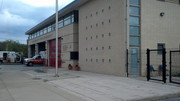

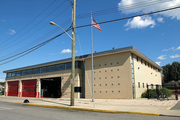

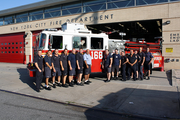
Sculpture "Working in Same Direction":
http://beatricecoron.com/rossville/index.html
Engine 168:

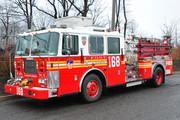
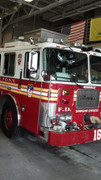
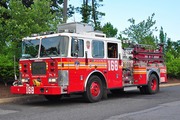
Reserve Engine 513:
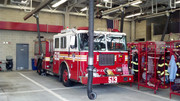
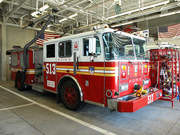
Engine 168:
https://www.youtube.com/watch?v=epdveIatb24
https://www.youtube.com/watch?v=uqXknzKQwOw
https://www.youtube.com/watch?v=GWYTjjGKnPU
2015 Rossville townhouse 4th Alarm:

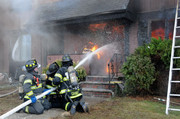
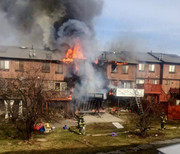
https://www.silive.com/southshore/2015/03/teenage_brothers_saw_flames_in.html
Engine 168 medal:
WILLIAM J. GRANT CAPT. ENG. 168 JUL. 7, 2014 2015 BENNETT
Staten Island Box 75-4625 1025 hours
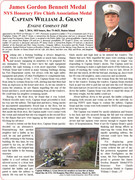
Rossville:
Former names: "Smoking Point" and "Blazing Star"
Ross Castle:
http://www.statenislandmuseum.org/collections/history-archives/lyon-castle-rossville-staten-island-ny
http://en.wikipedia.org/wiki/Rossville,_Staten_Island
The Rossville Fire of 1963 - On April 20, 1963, Rossville was the scene of the worst of three devastating brush fires to strike Staten Island; the three fires collectively destroyed more than 100 homes, rendering over 500 persons homeless and causing in excess of $2 million in damage. Rossville would be transformed permanently by the fire as it turned out, for once the Verrazano-Narrows Bridge was opened 19 months later, it and many other Staten Island neighborhoods would witness massive new home construction with many of the homes in Rossville which had been spared by the fire actually being demolished to make way for new, often larger ones.
Rossville shipyard:
http://forgotten-ny.com/2010/01/ship-graveyard-rossville-staten-island/
Former LNG tanks:
http://www.silive.com/southshore/index.ssf/2013/02/hulking_tanks_on_staten_island.html
Sandy Ground (formerly "Little Africa":
http://en.wikipedia.org/wiki/Sandy_Ground,_Staten_Island
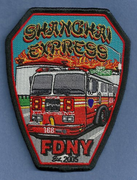

Engine 168 organized 1100 Rossville Avenue 2005
Battalion 23 located at 1100 Rossville Avenue 2013
Pre-FDNY: Rossville was protected by volunteer Rossville Hook & Ladder 1.
2355 Arthur Kill Road:


1100 Rossville Avenue:
http://www.nydailynews.com/archives/boroughs/rossville-spot-s-s-new-firehouse-article-1.868168
Monday, November 5, 2001 MAYOR GIULIANI JOINS FIRE COMMISSIONER VON ESSEN AND DDC COMMISSIONER HOLDEN TO BREAK GROUND ON NEW FIREHOUSE AND EMS STATION IN THE ROSSVILLE SECTION OF STATEN ISLAND
City's First Joint Firehouse and EMS Station - First New Engine Company in Staten Island in 30 Years
Mayor Rudolph W. Giuliani today joined Fire Commissioner Thomas Von Essen, Staten Island Borough President Guy Molinari, Deputy Borough President James Molinaro and Department of Design and Construction Commissioner (DDC) Kenneth Holden to break ground on a new 20,000 square foot, state-of-the-art Firehouse/EMS facility located on Rossville Avenue and Veteran's Road East in the Rossville section of Staten Island. The new facility - which is the first of its kind to be opened in the city - will help provide both improved fire suppression services and emergency medical ambulance service to the communities of Rossville, Huguenot, Pleasant Plains and Tottenville.
"This new state-of-the art facility will provide important emergency services to these growing Staten Island communities," Mayor Giuliani said. "The Fire Department is sensitive to meeting the emergency needs of growing neighborhoods and the construction of this new firehouse and EMS station will mean better emergency services and response to this area. The new facility will have a direct impact on the people it serves by protecting and saving lives."
"Due to the growing population coupled with enormous economic development in this area of Staten Island over the last few years, the Fire Department has seen an increased need for additional fire suppression support as well as the reallocation of emergency medical resources and EMS Support within this neighborhood," Fire Commissioner Von Essen said. "This new firehouse and EMS station will allow us to continue to effectively and efficiently serve the people of this community by helping to provide better Fire and EMS service and improved response times. By supporting this project, Mayor Giuliani continues to demonstrate his commitment to the Fire Department, its mission, its future, and the citizens that it serves."
DDC Commissioner Kenneth Holden said, "This is an important project because the work of the professionals who will use this facility has a direct benefit to this growing community. We are proud to continue our work with the Fire Department as they meet their mission of providing rapid response to people in time of need. DDC's mission is to build and rebuild New York and this project is a prime example of Mayor Giuliani's commitment to the public."
Currently, fire companies servicing this area respond from E164/L84 on Drumgoole Road or E151/L76 on Amboy Road, while ambulances servicing this area are turned out from a station at Seaview Hospital. The new station will provide enhanced fire and ambulance coverage and help to reduce response times throughout the borough. Construction of the new $9 million facility is expected to be complete by spring of 2003, and will eventually be home to the first new Engine Company on Staten Island in 30 years. The facility will house 5 Fire Department EMS units and approximately 90 firefighters, emergency medical technicians, paramedics and supervisory personnel.
In 1996 when the Fire Department and EMS merged, there were 16 EMS stations throughout the City and since then 10 stations have been added. At present, there are 13 more stations in development of which, three are currently in construction.
http://www.nyc.gov/html/om/html/2001b/pr349-01.html






Sculpture "Working in Same Direction":
http://beatricecoron.com/rossville/index.html
Engine 168:




Reserve Engine 513:


Engine 168:
https://www.youtube.com/watch?v=epdveIatb24
https://www.youtube.com/watch?v=uqXknzKQwOw
https://www.youtube.com/watch?v=GWYTjjGKnPU
2015 Rossville townhouse 4th Alarm:



https://www.silive.com/southshore/2015/03/teenage_brothers_saw_flames_in.html
Engine 168 medal:
WILLIAM J. GRANT CAPT. ENG. 168 JUL. 7, 2014 2015 BENNETT
Staten Island Box 75-4625 1025 hours

Rossville:
Former names: "Smoking Point" and "Blazing Star"
Ross Castle:
http://www.statenislandmuseum.org/collections/history-archives/lyon-castle-rossville-staten-island-ny
http://en.wikipedia.org/wiki/Rossville,_Staten_Island
The Rossville Fire of 1963 - On April 20, 1963, Rossville was the scene of the worst of three devastating brush fires to strike Staten Island; the three fires collectively destroyed more than 100 homes, rendering over 500 persons homeless and causing in excess of $2 million in damage. Rossville would be transformed permanently by the fire as it turned out, for once the Verrazano-Narrows Bridge was opened 19 months later, it and many other Staten Island neighborhoods would witness massive new home construction with many of the homes in Rossville which had been spared by the fire actually being demolished to make way for new, often larger ones.
Rossville shipyard:
http://forgotten-ny.com/2010/01/ship-graveyard-rossville-staten-island/
Former LNG tanks:
http://www.silive.com/southshore/index.ssf/2013/02/hulking_tanks_on_staten_island.html
Sandy Ground (formerly "Little Africa":
http://en.wikipedia.org/wiki/Sandy_Ground,_Staten_Island


- Joined
- Aug 29, 2008
- Messages
- 2,487
Mack, if I may contribute, EMS Batt. 23 opened in the new house at midnight on a date in February 2004. I had the privilege to work that first tour. Chief Leonard, then a Deputy Chief in Division 8 and some high ranking EMS Chiefs cut the ribbon, so to speak. Anyway, E168 went into service in June of 2005 and it was a perfect blend with both sides. I've been retired 9 years now and I still have fond memories of working there.
memory master said:Mack, if I may contribute, EMS Batt. 23 opened in the new house at midnight on a date in February 2004. I had the privilege to work that first tour. Chief Leonard, then a Deputy Chief in Division 8 and some high ranking EMS Chiefs cut the ribbon, so to speak. Anyway, E168 went into service in June of 2005 and it was a perfect blend with both sides. I've been retired 9 years now and I still have fond memories of working there.
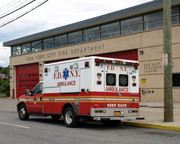
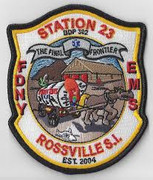
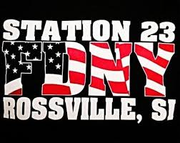
EMS Station 23:
LODD:
EMS LIEUTENANT BRENDAN D. PEARSON EMS STATION 23 APRIL 23, 2005
While working April 20, Lt. Brendan Pearson, a decorated 24-year EMS veteran, sustained a hernia while lifting a defibrillator box. Pearson, 49, assigned to Station 23 on Staten Island, underwent surgery at Victory Memorial Hospital in Brooklyn and appeared to be recovering when he died three days later.
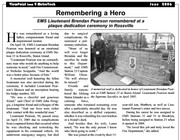
WTC-RELATED DEATH:
EMS CAPTAIN WILLIAM C. OLSEN EMS STATION 23 JUNE 1, 2014
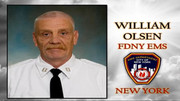
http://www.national-ems-memorial.org/william-c-olsen-2016-honoree/
https://www.silive.com/obituaries/2014/06/william_olsen_61.html
RIP. Never forget.

Thanks Memory Master.
LODD:
EMS LIEUTENANT BRENDAN D. PEARSON EMS STATION 23 APRIL 23, 2005
While working April 20, Lt. Brendan Pearson, a decorated 24-year EMS veteran, sustained a hernia while lifting a defibrillator box. Pearson, 49, assigned to Station 23 on Staten Island, underwent surgery at Victory Memorial Hospital in Brooklyn and appeared to be recovering when he died three days later.

WTC-RELATED DEATH:
EMS CAPTAIN WILLIAM C. OLSEN EMS STATION 23 JUNE 1, 2014

http://www.national-ems-memorial.org/william-c-olsen-2016-honoree/
https://www.silive.com/obituaries/2014/06/william_olsen_61.html
RIP. Never forget.

Thanks Memory Master.
Engine 231 Ladder 120 Battalion 44 - Christmas 1993
Brooklyn Box 1600, 0412 hours, December 25
At 0400 hrs on Christmas morning (1993), Watkins Street was dispatched to 1440 ENY Ave for a routine emergency. E231 FF Joe Cooney (now BC Cooney) was conversing with a young child in Apt 10B and it became apparent that the poor child would not be enjoying the Christmas experience as many of us know it. Upon being relieved from duty, FF Cooney (with his own money) went shopping on Pitkin Ave and proceeded to hand deliver toys to this child before heading home to his own family. The child?s mother (obviously moved by this chain of events) decided to contact the Brooklyn Dispatchers in hope of finding out the identity of the FF who left the toys. Upon investigation, a phone call was placed to E231 informing the Officer on duty (Lt Bobby Higgins, our future Captain) of what had occurred. FF Cooney returned to work again on the Christmas 6?9, but did not tell his Brother firefighters how he had spent his Christmas morning.
Attached is the Department Letterhead forwarded up the Chain of Command to then Fire Commissioner William Feehan, informing of the actions of FF Cooney. Appropriately (during the holiday season), this letter has been posted in the Watkins Street kitchen every year since.
As then Lt Higgins so eloquently wrote, ?FF Cooney?s actions on Christmas morning were of the highest quality and in the finest tradition of the FDNY. For that morning at least, Brownsville and Bethlehem did not seem so far apart.?
Merry Christmas from all of us on Watkins Street.
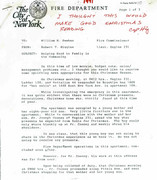

Note - Also posted this in the Christmas at the Firehouse thread.
Brooklyn Box 1600, 0412 hours, December 25
At 0400 hrs on Christmas morning (1993), Watkins Street was dispatched to 1440 ENY Ave for a routine emergency. E231 FF Joe Cooney (now BC Cooney) was conversing with a young child in Apt 10B and it became apparent that the poor child would not be enjoying the Christmas experience as many of us know it. Upon being relieved from duty, FF Cooney (with his own money) went shopping on Pitkin Ave and proceeded to hand deliver toys to this child before heading home to his own family. The child?s mother (obviously moved by this chain of events) decided to contact the Brooklyn Dispatchers in hope of finding out the identity of the FF who left the toys. Upon investigation, a phone call was placed to E231 informing the Officer on duty (Lt Bobby Higgins, our future Captain) of what had occurred. FF Cooney returned to work again on the Christmas 6?9, but did not tell his Brother firefighters how he had spent his Christmas morning.
Attached is the Department Letterhead forwarded up the Chain of Command to then Fire Commissioner William Feehan, informing of the actions of FF Cooney. Appropriately (during the holiday season), this letter has been posted in the Watkins Street kitchen every year since.
As then Lt Higgins so eloquently wrote, ?FF Cooney?s actions on Christmas morning were of the highest quality and in the finest tradition of the FDNY. For that morning at least, Brownsville and Bethlehem did not seem so far apart.?
Merry Christmas from all of us on Watkins Street.


Note - Also posted this in the Christmas at the Firehouse thread.
- Joined
- Aug 29, 2008
- Messages
- 2,487
Continue to Rest In Peace Bill & Brendan. If you look at the top of the EMS patch, right under Station 23, in smaller print is, "BDP 302." That is to honor EMS Lt. Brendan D. Pearson, badge #302, of station 23, who was also a LODD.mack said:
memory master said:Mack, if I may contribute, EMS Batt. 23 opened in the new house at midnight on a date in February 2004. I had the privilege to work that first tour. Chief Leonard, then a Deputy Chief in Division 8 and some high ranking EMS Chiefs cut the ribbon, so to speak. Anyway, E168 went into service in June of 2005 and it was a perfect blend with both sides. I've been retired 9 years now and I still have fond memories of working there.
"memory master", a few of us visited that station a couple of years ago. We were quite impressed and from what I could see, everything seemed to be working out quite well.
Engine 201/Ladder 114/Battalion 40 firehouse 5113 4th Avenue, Sunset Park, Brooklyn Division 8, Battalion 40 "Emerald Isle" & "Tally Ho"
Engine 1 BFD organized 633 4th Avenue former volunteer firehouse 1869
Engine 1 BFD new firehouse 5113 4th Avenue 1891
Engine 1 BFD became Engine 1 FDNY 1898
Engine 1 became Engine 101 1899
Engine 101 became Engine 2901 1913
Engine 201 moved 5011 7th Avenue 2007
Engine 201 new firehouse 5113 4th Avenue w/Ladder 114 2008
Ladder 18 BFD organized 5209 5th Avenue 1897
Ladder 18 became Ladder 18 FDNY 1898
Ladder 18 became Ladder 64 1899
Ladder 64 became Ladder 114 1913
Ladder 114 new firehouse 5113 4th Avenue w/Engine 201 2008
Battalion 40 organized 436 39th Street at Engine 128 1906
Battalion 40 moved 5011 7th Avenue at Engine 278 1917
Battalion 40 moved 5209 5th Avenue at Ladder 114 1975
Battalion 40 moved 5011 7th Avenue at Engine 278 1975
Battalion 40 moved 1336 60th Street at Engine 247 2004
Battalion 40 new firehouse 5113 w/Engine 201 2008
Pre-BFD - volunteer company:
Putnam Engine No. 21 was located on Fourth Avenue between Eighteenth and Nineteenth Streets.
Engine 1 Brooklyn Fire Department:

Engine No. 1, as its number indicates, was organized when the Paid Department came into existence. It was installed in the house on Fourth Avenue, between Eighteenth and Nineteenth Streets, which, prior to that time, had been occupied by Putnam Engine No. 21, of the Volunteer Department, and remained there until Aug. 20, 1891, when it was reorganized and moved to a new building of better design and more ample accommodations on Fourth Avenue, between Fifty-first and Fifty-second Streets. The building is of buff colored brick with trimmings of red sandstone, and is an ornament to the neighborhood. While there is little or no pretension to embellishment on the interior, it is neat and comfortable and well adapted to the purposes of the company.
In its early days this company had a large, but not a particularly populous district to cover. For the past ten or twelve years, however, building operations have been brisk, and where vacant lots and wooden dwellings were once numerous, there have been erected many fine large factories, public institutions, and apartment houses. Early in the year 1889 Commissioner Ennis was appealed to by the property owners and residents of the lower section of the Eighth Ward for better protection from fire. The district had grown wonderfully, and as a truck company was needed in the neighborhood the Commissioner took occasion to transfer the engine as soon as the house was completed and ready for occupancy. James Connors, who served as Foreman for several years, and was then Assistant Foreman of Engine No. 1, was placed temporarily in charge, and was subsequently promoted to a foremanship, and his place at the head of the company was made permanent. The district is bounded by Prospect Avenue, New Utrecht, Bay Ridge and New York Bay. Among the important buildings in the district are many large structures where machinery is used, including the electrical stations of the Brooklyn City Railroad Company, from which several lines of surface trolley cars are to be operated, the big factory of the United States Projectile Company, where the manufacture of shells for government guns is a specialty; the oil refinery of Bush Denslow, and the large paper manufactory founded by the late Robert Graves, several large factories where high combustibles and explosives are the output and stock in trade, the great storm shed of the South Brooklyn Terminal Company, and the ferry house of the Thirty-ninth Street Ferry alongside. All these contribute materially to the possibilities of serious and disastrous conflagration within the limits of the bailiwick so creditably covered by Engine No.1.
Since the reorganization of the company a few months ago it has had little chance to distinguish itself, but what duty it was called upon to do was performed satisfactorily. It was in its early days and while in the old quarters that the company won praise for valiant services. It was a tradition that " Engine No. 1 " was always first at a fire, and the last to leave and did the most effective service. The engine was formerly in the service of No. 9. It is a second-class Amoskeag, and while yet in perfect condition was one of the first brought into the Department. The tender, or hose-carriage, is one of the " old originals," and is equal to the emergencies that beset its path. " Harry," " Jim " and "Jerry " are the engine pets that speed their way to fires. Their intelligence and affection are not to be overlooked. They require no urging or driving, when the noisy, clanging gong denotes a conflagration and summons No. 1 in haste to the foremost line of duty.
Foreman JAMES CONNORS was born in Brooklyn, Aug. 8, 1844 His appointment, made Sept. 15, 1869, places him among the oldest and most reliable members of the Department. In his youth, through the medium of the Volunteer Department, he was enabled to satisfy an ambition for fire-fighting. When old enough he became actively identified with Hose No. 14, which was then quartered in Ninth Street near Third Avenue. Here he speedily earned promotion to Assistant Foreman, a position he held until the advent of the Paid Department of which he became a member. The rapidity with which Foreman Connors forged ahead in his new place, and the events of his period of duty, confirm the adage that " a good man cannot be kept down." On Jan.23, 1872, in recognition of faithful and earnest work, he was elevated to the rank of Foreman, though only to be reduced to the ranks seven years later by an act of the Shannon - Commission. The following year his worth was again proven by his reinstatement as Foreman, but on Oct.21, 1881, among others he suffered another reduction to the ranks. For six years thereafter he continued as a private. When the position of Assistant Foreman was created he was one of the first men appointed by Commissioner Ennis, being fourth on an eligible list of over fifty. This occurred March 1, 1887. Under the same official he worked his way back to his old post, his advancement taking place June 9, 1891 Foreman Connors, like many other veterans of the Department, has had more than one narrow escape from instant death, besides sustaining bodily injuries several times. At the big fire which demolished the extensive warehouse buildings of Woodruff & Robinson in 1872 , he was stationed in front of the building, When ordered to the rear. He had hardly reached there when the front of the structure fell in with a thunderous crash, almost upon his back. At the same conflagration he ascended a ladder which rested on an insecure shed, part of an adjoining building. Several firemen also climbed the rungs. They had just thrown a stream on the roaring flames when a creaking sound below attracted the attention of the men. They had scarcely turned their heads to learn the cause of the noise when the roof gave away leaving a small patch secure enough to keep the ladder and its imperiled occupants from being precipitated into the ruins, which meant a horrible death.
Assistant Foreman HENRY PLATT was born in New York City, May 22, 1856, was appointed a fireman April I, 1885, and assigned to Truck No.1. Later he was transferred to the fire-boat ?Seth Low." On Feb. 13, 1 892, he was made an Assistant Foreman and assigned to Engine No.1, where he has served creditably since. With others the last big fire in Pratt's Oil Works, Greenpoint, saw him detailed for ten days by his superior to guard the ruins against a fresh outbreak. It proved his longest and most eventful period of out-door duty since he joined the Department.
Engineer ROBERT STACK was born in New York City, March 14, 1862, and was appointed July 1, 1885. His first duties in the Department were performed as a fireman on Engine No. 28. He was made Engineer Feb. 10, 1891, and his transfer to Engine No. 1 occurred when that company moved into its present quarters. Engineer Stack sustained painful injuries at a fire on Conover Street, near William, in the winter inter of 1888, by accidentally falling from a two-story window to the street. The mishap confined him to his bed for two weeks.
GEORGE SPRAGUE, Assistant Engineer of Engine No.1, was born Jan. 14, 1846. He received his appointment April I, 1890, and became a member of Engine No. 6, receiving his promotion as stoker sixteen days later. From Engine No. 6 he was transfer to Engine No. 28, upon the organization of the latter, and reported for duty to Engine No. 1, the day it located in its present place. Mr. Sprague enlisted in the Navy on April I, 1863, and received his discharge April 13,, 1865. He arrived in Washington on the night Lincoln was shot. His two years of service were put in on board the government dispatch vessel ?Cactus," which is to-day doing duty in the Federal Light house Service.
ALEXANDER F. NORTON was born in New York City, March 7, 1863. He was appointed Oct. 14, 1890, and was assigned to Truck No. T. He was transferred to Engine No. 1 Aug. 20, of the following year.
WESLEY SPRAGUE, a son of George Sprague above, was born Dec. 28, 1868 His appointment was made Jan. 31, 1891. He first reported for duty to Engine No. 28, and has been with Engine No. 1 since it has occupied its present house.
THOMAS F. NOLAN was born at Fort Hamilton, July 2, 1864. He was appointed July 15, 1889, and began his fire career on Truck No. 5.On April 17, 1890, he was transferred to Engine No. 28, where he filled the position of driver. His connection with Engine No. 1, where he also handles the ribbons, began in 1891.
JOHN J. SHANNON was born in Ireland, July 9, 1867. He received his appointment March 12, 1891, and after serving on Engines Nos. 2 and 28 respectively, became attached to No. 1 in 1891.
LOUIS FRITSCHLER, who drives the hose-cart of Engine No. I was born in Baltimore, Md., in the year 1846. He served five years in the Fifth United States Artillery Band prior to his appointment in the Fire Department, which was on Aug. 6, 1883. He reported for duty to Truck No. 1. His transfer to Engine No. 1 occurred Jan. 24, 1884. A short stay with the latter organization was followed by an official order to join Engine No. 28, and in 1891 he returned to Engine No. 1.
Engine 1 BFD organized 633 4th Avenue former volunteer firehouse 1869
Engine 1 BFD new firehouse 5113 4th Avenue 1891
Engine 1 BFD became Engine 1 FDNY 1898
Engine 1 became Engine 101 1899
Engine 101 became Engine 2901 1913
Engine 201 moved 5011 7th Avenue 2007
Engine 201 new firehouse 5113 4th Avenue w/Ladder 114 2008
Ladder 18 BFD organized 5209 5th Avenue 1897
Ladder 18 became Ladder 18 FDNY 1898
Ladder 18 became Ladder 64 1899
Ladder 64 became Ladder 114 1913
Ladder 114 new firehouse 5113 4th Avenue w/Engine 201 2008
Battalion 40 organized 436 39th Street at Engine 128 1906
Battalion 40 moved 5011 7th Avenue at Engine 278 1917
Battalion 40 moved 5209 5th Avenue at Ladder 114 1975
Battalion 40 moved 5011 7th Avenue at Engine 278 1975
Battalion 40 moved 1336 60th Street at Engine 247 2004
Battalion 40 new firehouse 5113 w/Engine 201 2008
Pre-BFD - volunteer company:
Putnam Engine No. 21 was located on Fourth Avenue between Eighteenth and Nineteenth Streets.
Engine 1 Brooklyn Fire Department:

Engine No. 1, as its number indicates, was organized when the Paid Department came into existence. It was installed in the house on Fourth Avenue, between Eighteenth and Nineteenth Streets, which, prior to that time, had been occupied by Putnam Engine No. 21, of the Volunteer Department, and remained there until Aug. 20, 1891, when it was reorganized and moved to a new building of better design and more ample accommodations on Fourth Avenue, between Fifty-first and Fifty-second Streets. The building is of buff colored brick with trimmings of red sandstone, and is an ornament to the neighborhood. While there is little or no pretension to embellishment on the interior, it is neat and comfortable and well adapted to the purposes of the company.
In its early days this company had a large, but not a particularly populous district to cover. For the past ten or twelve years, however, building operations have been brisk, and where vacant lots and wooden dwellings were once numerous, there have been erected many fine large factories, public institutions, and apartment houses. Early in the year 1889 Commissioner Ennis was appealed to by the property owners and residents of the lower section of the Eighth Ward for better protection from fire. The district had grown wonderfully, and as a truck company was needed in the neighborhood the Commissioner took occasion to transfer the engine as soon as the house was completed and ready for occupancy. James Connors, who served as Foreman for several years, and was then Assistant Foreman of Engine No. 1, was placed temporarily in charge, and was subsequently promoted to a foremanship, and his place at the head of the company was made permanent. The district is bounded by Prospect Avenue, New Utrecht, Bay Ridge and New York Bay. Among the important buildings in the district are many large structures where machinery is used, including the electrical stations of the Brooklyn City Railroad Company, from which several lines of surface trolley cars are to be operated, the big factory of the United States Projectile Company, where the manufacture of shells for government guns is a specialty; the oil refinery of Bush Denslow, and the large paper manufactory founded by the late Robert Graves, several large factories where high combustibles and explosives are the output and stock in trade, the great storm shed of the South Brooklyn Terminal Company, and the ferry house of the Thirty-ninth Street Ferry alongside. All these contribute materially to the possibilities of serious and disastrous conflagration within the limits of the bailiwick so creditably covered by Engine No.1.
Since the reorganization of the company a few months ago it has had little chance to distinguish itself, but what duty it was called upon to do was performed satisfactorily. It was in its early days and while in the old quarters that the company won praise for valiant services. It was a tradition that " Engine No. 1 " was always first at a fire, and the last to leave and did the most effective service. The engine was formerly in the service of No. 9. It is a second-class Amoskeag, and while yet in perfect condition was one of the first brought into the Department. The tender, or hose-carriage, is one of the " old originals," and is equal to the emergencies that beset its path. " Harry," " Jim " and "Jerry " are the engine pets that speed their way to fires. Their intelligence and affection are not to be overlooked. They require no urging or driving, when the noisy, clanging gong denotes a conflagration and summons No. 1 in haste to the foremost line of duty.
Foreman JAMES CONNORS was born in Brooklyn, Aug. 8, 1844 His appointment, made Sept. 15, 1869, places him among the oldest and most reliable members of the Department. In his youth, through the medium of the Volunteer Department, he was enabled to satisfy an ambition for fire-fighting. When old enough he became actively identified with Hose No. 14, which was then quartered in Ninth Street near Third Avenue. Here he speedily earned promotion to Assistant Foreman, a position he held until the advent of the Paid Department of which he became a member. The rapidity with which Foreman Connors forged ahead in his new place, and the events of his period of duty, confirm the adage that " a good man cannot be kept down." On Jan.23, 1872, in recognition of faithful and earnest work, he was elevated to the rank of Foreman, though only to be reduced to the ranks seven years later by an act of the Shannon - Commission. The following year his worth was again proven by his reinstatement as Foreman, but on Oct.21, 1881, among others he suffered another reduction to the ranks. For six years thereafter he continued as a private. When the position of Assistant Foreman was created he was one of the first men appointed by Commissioner Ennis, being fourth on an eligible list of over fifty. This occurred March 1, 1887. Under the same official he worked his way back to his old post, his advancement taking place June 9, 1891 Foreman Connors, like many other veterans of the Department, has had more than one narrow escape from instant death, besides sustaining bodily injuries several times. At the big fire which demolished the extensive warehouse buildings of Woodruff & Robinson in 1872 , he was stationed in front of the building, When ordered to the rear. He had hardly reached there when the front of the structure fell in with a thunderous crash, almost upon his back. At the same conflagration he ascended a ladder which rested on an insecure shed, part of an adjoining building. Several firemen also climbed the rungs. They had just thrown a stream on the roaring flames when a creaking sound below attracted the attention of the men. They had scarcely turned their heads to learn the cause of the noise when the roof gave away leaving a small patch secure enough to keep the ladder and its imperiled occupants from being precipitated into the ruins, which meant a horrible death.
Assistant Foreman HENRY PLATT was born in New York City, May 22, 1856, was appointed a fireman April I, 1885, and assigned to Truck No.1. Later he was transferred to the fire-boat ?Seth Low." On Feb. 13, 1 892, he was made an Assistant Foreman and assigned to Engine No.1, where he has served creditably since. With others the last big fire in Pratt's Oil Works, Greenpoint, saw him detailed for ten days by his superior to guard the ruins against a fresh outbreak. It proved his longest and most eventful period of out-door duty since he joined the Department.
Engineer ROBERT STACK was born in New York City, March 14, 1862, and was appointed July 1, 1885. His first duties in the Department were performed as a fireman on Engine No. 28. He was made Engineer Feb. 10, 1891, and his transfer to Engine No. 1 occurred when that company moved into its present quarters. Engineer Stack sustained painful injuries at a fire on Conover Street, near William, in the winter inter of 1888, by accidentally falling from a two-story window to the street. The mishap confined him to his bed for two weeks.
GEORGE SPRAGUE, Assistant Engineer of Engine No.1, was born Jan. 14, 1846. He received his appointment April I, 1890, and became a member of Engine No. 6, receiving his promotion as stoker sixteen days later. From Engine No. 6 he was transfer to Engine No. 28, upon the organization of the latter, and reported for duty to Engine No. 1, the day it located in its present place. Mr. Sprague enlisted in the Navy on April I, 1863, and received his discharge April 13,, 1865. He arrived in Washington on the night Lincoln was shot. His two years of service were put in on board the government dispatch vessel ?Cactus," which is to-day doing duty in the Federal Light house Service.
ALEXANDER F. NORTON was born in New York City, March 7, 1863. He was appointed Oct. 14, 1890, and was assigned to Truck No. T. He was transferred to Engine No. 1 Aug. 20, of the following year.
WESLEY SPRAGUE, a son of George Sprague above, was born Dec. 28, 1868 His appointment was made Jan. 31, 1891. He first reported for duty to Engine No. 28, and has been with Engine No. 1 since it has occupied its present house.
THOMAS F. NOLAN was born at Fort Hamilton, July 2, 1864. He was appointed July 15, 1889, and began his fire career on Truck No. 5.On April 17, 1890, he was transferred to Engine No. 28, where he filled the position of driver. His connection with Engine No. 1, where he also handles the ribbons, began in 1891.
JOHN J. SHANNON was born in Ireland, July 9, 1867. He received his appointment March 12, 1891, and after serving on Engines Nos. 2 and 28 respectively, became attached to No. 1 in 1891.
LOUIS FRITSCHLER, who drives the hose-cart of Engine No. I was born in Baltimore, Md., in the year 1846. He served five years in the Fifth United States Artillery Band prior to his appointment in the Fire Department, which was on Aug. 6, 1883. He reported for duty to Truck No. 1. His transfer to Engine No. 1 occurred Jan. 24, 1884. A short stay with the latter organization was followed by an official order to join Engine No. 28, and in 1891 he returned to Engine No. 1.
Engine 201/Ladder 114/Battalion 40 (continued)
Ladder Company 114 history:

100 YEARS OF SERVICE TO BAY RIDGE BROOKLYN - TALLY HO LADDER 114 1897 - 1997
Ladder 114 was placed in service on September 15, 1897 at 5209 5th Avenue. When placed in service, Ladder 114 was not known as 114 or even part of the New York City Fire Department. The rig was pulled by a team of three horses and painted a two tone green. One hundred years ago it was known as Ladder 18 and was part of the Brooklyn Fire Department.
Ladder 18 went in service in what was then the northern reaches of Bay Ridge Brooklyn.
The Sunset Park section of Brooklyn once belonged to the Gowanus section of Brooklyn and the Bay Ridge section of New Utrecht. The area started developing in the 1830's. Brooklyn built Sunset Park just south of Greenwood Cemetery between 5th and 6th Avenues in the early 1890s.
The area started to grow and the area became home for Polish, Norwegian, and Finnish immigrants. The name of Sunset Park to this area was not used until the mid 1960's.
The Town of New Utrecht was annexed to Brooklyn in 1895 along with the Towns Gravesend Neck, Flatbush and Flatlands. With this annexation, the size of Brooklyn almost doubled overnight. Brooklyn was obligated to provided fire protection to the areas. The Fire Department had to build fire houses and equip the new companies and until such time the volunteer system would continue to operate. The City would supply and pay the volunteers $1000 a year until being replaced. On February 1, 1896 the paid system was introduced to New Utrecht and ten companies were placed in service in five new houses.
Bay Ridge was beginning to grow and an additional ladder company was needed between Ladder 9 (now 109) at 4th Avenue and 19th Street and Ladder 13 at Bay Ridge and 3rd Avenues. Engine 1 (now 201) had been moved from Ladder 9 quarters in 1891 to a new house at 4th Avenue and 52nd Street because of this growth. A site on Fifth Avenue was picked, even though the area on top of the hill had not been developed yet. Fire Commissioner William C. Bryant wanted a fire house in this area so when it was developed the Fire Department would be ready.
A lot owned by Alice M. Clark was bought on March 7, 1897 for $1,500 and it measured 25 feet by 100 feet. A two story building was designed by P. J. Lauritzen and built by Andrew P. Blixt for $14,600. The main building would measure 25 feet by 75 feet deep. Behind this, a 11 by 25 foot one story building was used for the storing of the feed and straw bedding for the horses. The main building housed the apparatus on the first floor and four stalls for the three horses. The second floor had the dormitories for the members and in front was the office and Foreman's' quarters. The roof had a large skylight that permitted the second floor to be lit. Each fireman had his own bed and wall locker. Two sliding poles were placed for responding down to the apparatus floor along with two spiral staircases.
A new feature was added to this house, a first for Brooklyn. Behind the feed room was an additional room for the leisure time between runs. The firemen would spend most of the day time on the first floor or milling around in front of the station waiting for alarms. This room would be set up as a sitting parlor for the men.
A crew of ten men, under the command of Foreman Charles H. Bixby and Assistant Foreman Cornelius Cunningham opened the house with a 1889 Lafrance Hayes 85' aerial ladder and a three horse hitch. A fireman did not have to worry about finding a mutual partner or wonders "do I go to work today". The work chart was very simple, twenty fours a day, six days on and the seventh day off. Each day the members were allowed two hours off for meals, twice a day. They also could be detailed to another house to cover for an injured or sick member. The pay for the 144 hour week was around $17.28 or $900 a year.
The Cities of New York (including the Bronx), Brooklyn, Long Island City, parts of Western Queens, and Staten Island merged into the five Boroughs of New York City on January 1, 1898. Ladder 18 officially became part of the FDNY on January 28th. Brooklyn had twenty-five ladder companies in service when the annexation took place. On April 15, 1898, the houses that had both an engine and ladder responding from them had the ladders disbanded and assigned to the engine company. The ladder companies in single houses retained their identity except for Ladder 18 and 23. Ladder 18 was renumbered to Ladder 14 and Ladder 23 became Ladder 13 in Engine 49's (now 249) quarters. On October 1, 1899 Ladder 14 was renumbered to Ladder 64 to avoid confusion with Ladder 14 in Manhattan. The engine companies were given a hundred to their number and Engine 1 became Engine 101.
The numbers would change one more time on January 1, 1913. Due to the increase in new companies being placed in service during 1913, the company numbers in Brooklyn, Queens, and Staten Island were changed. The ladder companies in Brooklyn and Queens were given another fifty to their number, thus Ladder 64 became Ladder 114. The engines went from Engine 101 to Engine 201. The ladder companies in Staten Island went from Ladder 101 to Ladder 76 and the engine companies became the 150's from the 200's.
Battalion 40 was added to house when Engine 278's house closed on July 2, 1975 during the budget crunch of the 1970's. Engine 278 was put back in service on July 16 and the Battalion moved back to 7th Avenue.
The first due area of Ladder 114 started to change in the early 1950's when the Gowanus Highway was being built. The 3rd Avenue El was torn down, docks along the water front started closing, and the Brooklyn Army
Terminal was closed in 1970. The working class started to move out and many buildings became vacant and deteriorated. Ladder 114 went from a slow fire company to a very active unit. Just about every day the company would catch a worker or two along 2nd, 3rd, 6th Avenues and 49th Street.
The reason for this increase was lovers squabbles, arson for profit, gang wars, and drugs. The community changed for the better by the mid 1980's when the baby boomers starting buying up the old buildings at low prices. With this increase of money or community pride the fires started to decline and the area is again respectable. Fighting fires for a living is one of the most dangerous jobs in America.
In New York City 775 firemen have given their lives fighting the "Red Devil". Three members of Ladder 114 have paid the ultimate price. Fireman Alfred Kundie died on February 18, 1919 while fighting a fire in the hold of steamship "K. I. Luckenbach. Fireman Vincent Laurence died on August 20, 1955 from the results of injuries while fighting a fire at 5th Avenue and 61st Street on March 1, 1952. At the time of his death he was assigned to the Limited Service Squad and assigned to the Brooklyn Communication office. Fireman James C. Kearney died on August 28, 1967, three days after being injured in quarters.
Ladder 114 has a proud tradition for the past 100 years. They went from horse power to motor power, open rigs to enclosed rigs, rubber coated coats to full bunker gear, smoke inhalation to self contained air tanks in that time. What will the next 100 years bring for changes? No matter what those changes are Ladder 114 will tackle it head on.

Ladder Company 114 history:

100 YEARS OF SERVICE TO BAY RIDGE BROOKLYN - TALLY HO LADDER 114 1897 - 1997
Ladder 114 was placed in service on September 15, 1897 at 5209 5th Avenue. When placed in service, Ladder 114 was not known as 114 or even part of the New York City Fire Department. The rig was pulled by a team of three horses and painted a two tone green. One hundred years ago it was known as Ladder 18 and was part of the Brooklyn Fire Department.
Ladder 18 went in service in what was then the northern reaches of Bay Ridge Brooklyn.
The Sunset Park section of Brooklyn once belonged to the Gowanus section of Brooklyn and the Bay Ridge section of New Utrecht. The area started developing in the 1830's. Brooklyn built Sunset Park just south of Greenwood Cemetery between 5th and 6th Avenues in the early 1890s.
The area started to grow and the area became home for Polish, Norwegian, and Finnish immigrants. The name of Sunset Park to this area was not used until the mid 1960's.
The Town of New Utrecht was annexed to Brooklyn in 1895 along with the Towns Gravesend Neck, Flatbush and Flatlands. With this annexation, the size of Brooklyn almost doubled overnight. Brooklyn was obligated to provided fire protection to the areas. The Fire Department had to build fire houses and equip the new companies and until such time the volunteer system would continue to operate. The City would supply and pay the volunteers $1000 a year until being replaced. On February 1, 1896 the paid system was introduced to New Utrecht and ten companies were placed in service in five new houses.
Bay Ridge was beginning to grow and an additional ladder company was needed between Ladder 9 (now 109) at 4th Avenue and 19th Street and Ladder 13 at Bay Ridge and 3rd Avenues. Engine 1 (now 201) had been moved from Ladder 9 quarters in 1891 to a new house at 4th Avenue and 52nd Street because of this growth. A site on Fifth Avenue was picked, even though the area on top of the hill had not been developed yet. Fire Commissioner William C. Bryant wanted a fire house in this area so when it was developed the Fire Department would be ready.
A lot owned by Alice M. Clark was bought on March 7, 1897 for $1,500 and it measured 25 feet by 100 feet. A two story building was designed by P. J. Lauritzen and built by Andrew P. Blixt for $14,600. The main building would measure 25 feet by 75 feet deep. Behind this, a 11 by 25 foot one story building was used for the storing of the feed and straw bedding for the horses. The main building housed the apparatus on the first floor and four stalls for the three horses. The second floor had the dormitories for the members and in front was the office and Foreman's' quarters. The roof had a large skylight that permitted the second floor to be lit. Each fireman had his own bed and wall locker. Two sliding poles were placed for responding down to the apparatus floor along with two spiral staircases.
A new feature was added to this house, a first for Brooklyn. Behind the feed room was an additional room for the leisure time between runs. The firemen would spend most of the day time on the first floor or milling around in front of the station waiting for alarms. This room would be set up as a sitting parlor for the men.
A crew of ten men, under the command of Foreman Charles H. Bixby and Assistant Foreman Cornelius Cunningham opened the house with a 1889 Lafrance Hayes 85' aerial ladder and a three horse hitch. A fireman did not have to worry about finding a mutual partner or wonders "do I go to work today". The work chart was very simple, twenty fours a day, six days on and the seventh day off. Each day the members were allowed two hours off for meals, twice a day. They also could be detailed to another house to cover for an injured or sick member. The pay for the 144 hour week was around $17.28 or $900 a year.
The Cities of New York (including the Bronx), Brooklyn, Long Island City, parts of Western Queens, and Staten Island merged into the five Boroughs of New York City on January 1, 1898. Ladder 18 officially became part of the FDNY on January 28th. Brooklyn had twenty-five ladder companies in service when the annexation took place. On April 15, 1898, the houses that had both an engine and ladder responding from them had the ladders disbanded and assigned to the engine company. The ladder companies in single houses retained their identity except for Ladder 18 and 23. Ladder 18 was renumbered to Ladder 14 and Ladder 23 became Ladder 13 in Engine 49's (now 249) quarters. On October 1, 1899 Ladder 14 was renumbered to Ladder 64 to avoid confusion with Ladder 14 in Manhattan. The engine companies were given a hundred to their number and Engine 1 became Engine 101.
The numbers would change one more time on January 1, 1913. Due to the increase in new companies being placed in service during 1913, the company numbers in Brooklyn, Queens, and Staten Island were changed. The ladder companies in Brooklyn and Queens were given another fifty to their number, thus Ladder 64 became Ladder 114. The engines went from Engine 101 to Engine 201. The ladder companies in Staten Island went from Ladder 101 to Ladder 76 and the engine companies became the 150's from the 200's.
Battalion 40 was added to house when Engine 278's house closed on July 2, 1975 during the budget crunch of the 1970's. Engine 278 was put back in service on July 16 and the Battalion moved back to 7th Avenue.
The first due area of Ladder 114 started to change in the early 1950's when the Gowanus Highway was being built. The 3rd Avenue El was torn down, docks along the water front started closing, and the Brooklyn Army
Terminal was closed in 1970. The working class started to move out and many buildings became vacant and deteriorated. Ladder 114 went from a slow fire company to a very active unit. Just about every day the company would catch a worker or two along 2nd, 3rd, 6th Avenues and 49th Street.
The reason for this increase was lovers squabbles, arson for profit, gang wars, and drugs. The community changed for the better by the mid 1980's when the baby boomers starting buying up the old buildings at low prices. With this increase of money or community pride the fires started to decline and the area is again respectable. Fighting fires for a living is one of the most dangerous jobs in America.
In New York City 775 firemen have given their lives fighting the "Red Devil". Three members of Ladder 114 have paid the ultimate price. Fireman Alfred Kundie died on February 18, 1919 while fighting a fire in the hold of steamship "K. I. Luckenbach. Fireman Vincent Laurence died on August 20, 1955 from the results of injuries while fighting a fire at 5th Avenue and 61st Street on March 1, 1952. At the time of his death he was assigned to the Limited Service Squad and assigned to the Brooklyn Communication office. Fireman James C. Kearney died on August 28, 1967, three days after being injured in quarters.
Ladder 114 has a proud tradition for the past 100 years. They went from horse power to motor power, open rigs to enclosed rigs, rubber coated coats to full bunker gear, smoke inhalation to self contained air tanks in that time. What will the next 100 years bring for changes? No matter what those changes are Ladder 114 will tackle it head on.

Engine 201/Ladder 114/Battalion 40 (continued)
633 4th Avenue Engine 201 former firehouse:
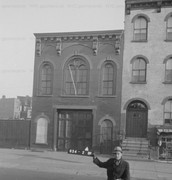
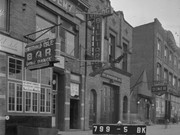
5114 4th Avenue Engine 201 former firehouse:
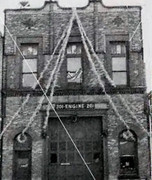
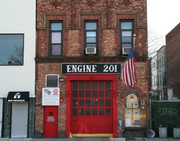
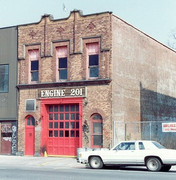

5209 5th Avenue Ladder 114/Battalion 40 former firehouse:
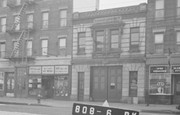
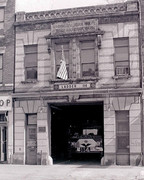
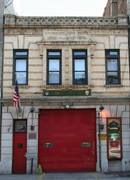
5113 4th Avenue Engine 201/Ladder 114/Battalion 40 firehouse:

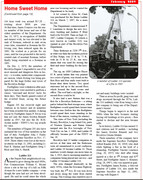


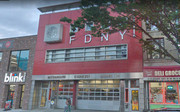
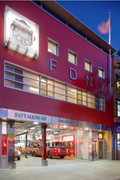
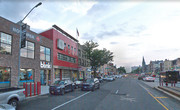
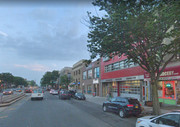
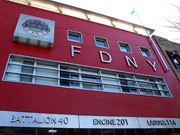
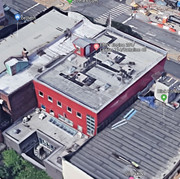
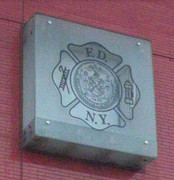
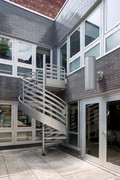
http://rktb.com/civic-cultural/26-portfolio/civic-cultural/124-fdny-engine-company-201
633 4th Avenue Engine 201 former firehouse:


5114 4th Avenue Engine 201 former firehouse:




5209 5th Avenue Ladder 114/Battalion 40 former firehouse:



5113 4th Avenue Engine 201/Ladder 114/Battalion 40 firehouse:












http://rktb.com/civic-cultural/26-portfolio/civic-cultural/124-fdny-engine-company-201


